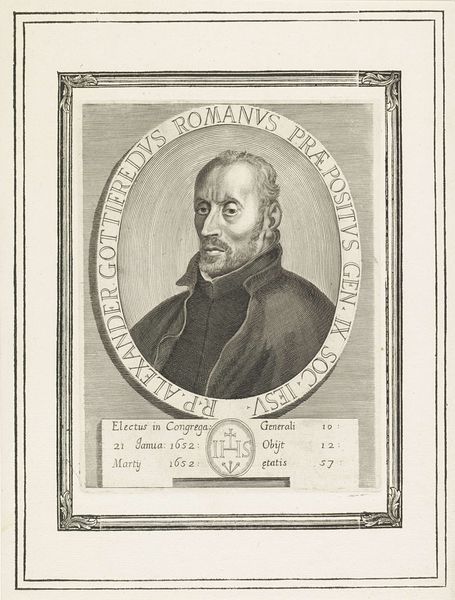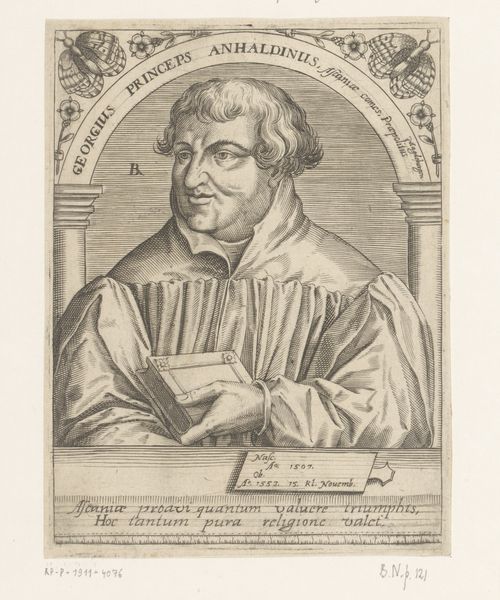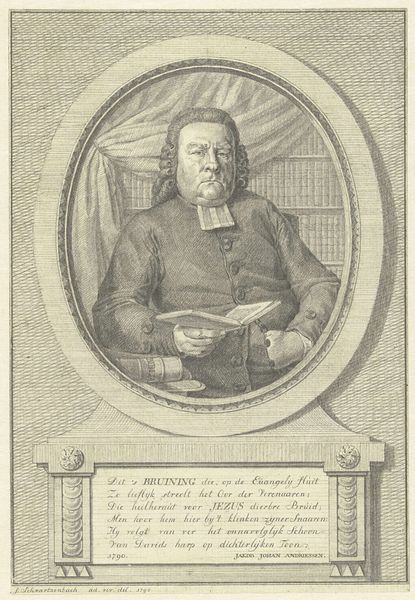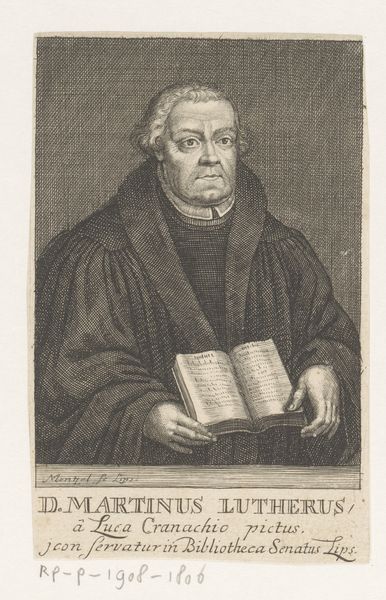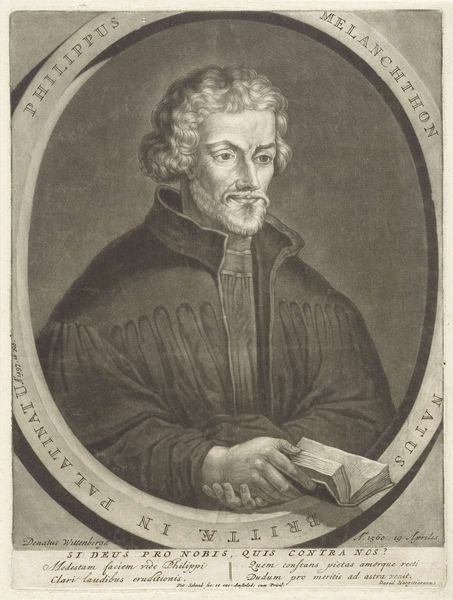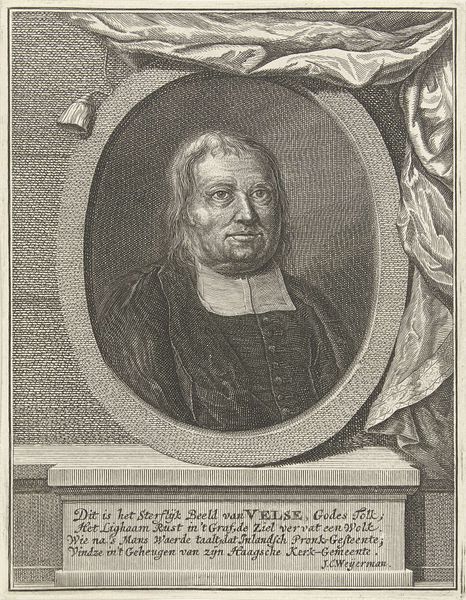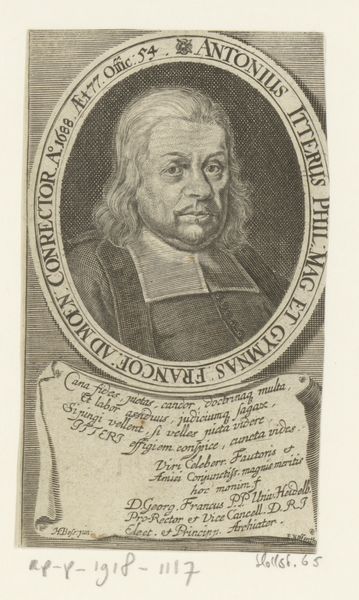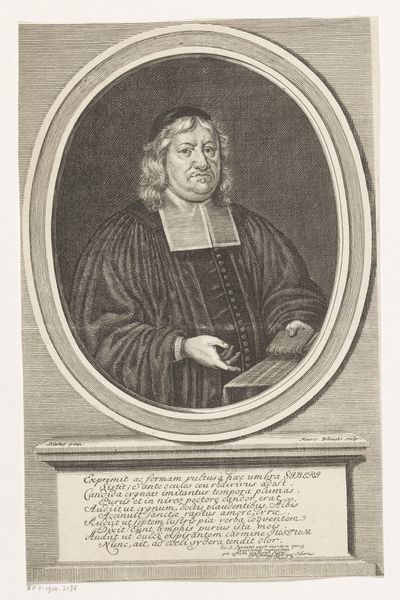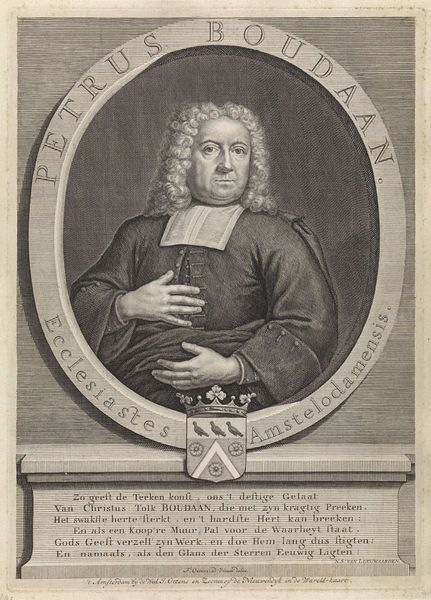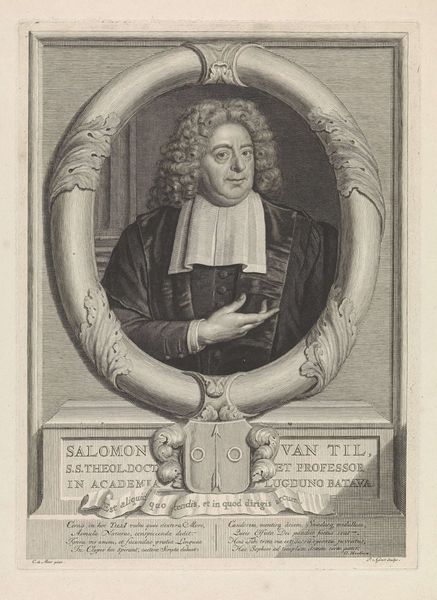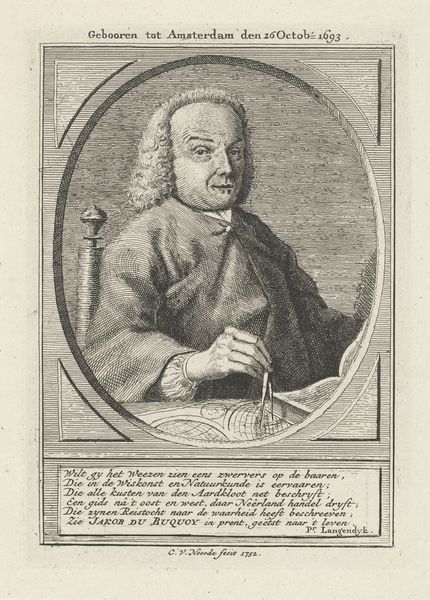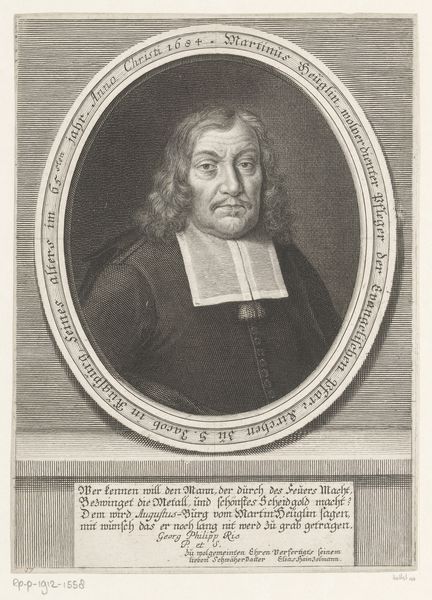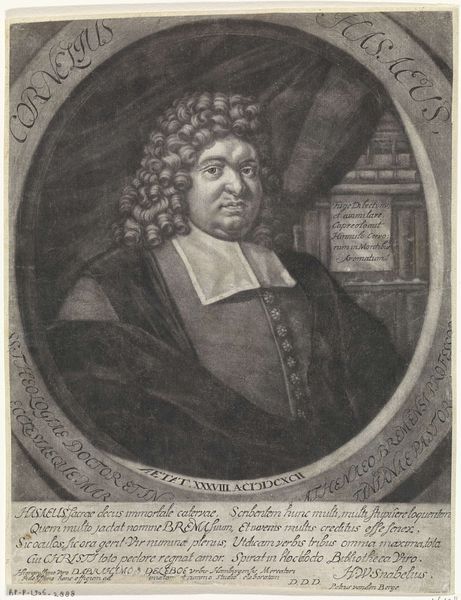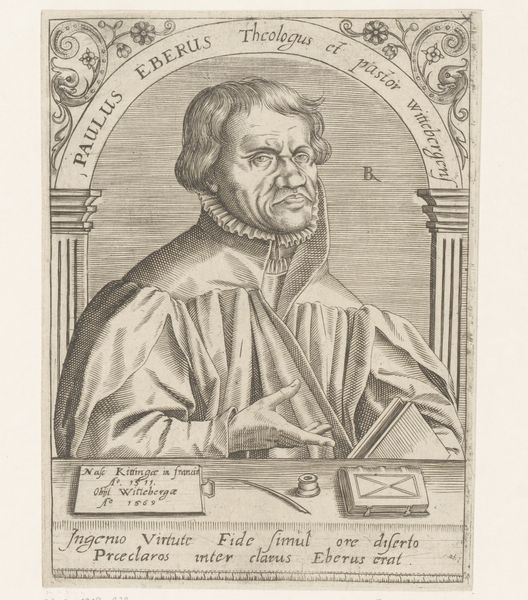
print, engraving
#
portrait
#
baroque
# print
#
old engraving style
#
pencil drawing
#
history-painting
#
engraving
Dimensions: height 192 mm, width 140 mm
Copyright: Rijks Museum: Open Domain
Editor: Here we have Jacob Gole’s "Portret van Martin Luther," dating roughly from 1670 to 1724. It’s an engraving, so it has this incredible crispness, almost a starkness, to it. The circular frame with the inscriptions gives it a kind of medallion feel. How do you interpret this work, considering its historical context? Curator: The portrait exists not just as a representation of Martin Luther, but as an assertion of identity in a specific religious and political landscape. Consider the Baroque period's emphasis on drama and grandeur, qualities seemingly muted here, yet present in the bold pronouncements encircling Luther. "The Antichrist thought himself master of the Gospel"—that's a powerful claim. Do you see how this positions Luther within the religious conflicts of the time? Editor: Yes, it’s interesting how the portrait itself feels very composed, almost serene, but those inscriptions are pure conflict. Curator: Exactly! Gole isn’t just depicting a man; he's constructing a narrative of defiance against established religious authority. What do you think about the choice of engraving as a medium for disseminating this image? Editor: Because it’s reproducible, right? It allows the image, and therefore the ideas associated with Luther, to circulate more widely. It’s a form of visual activism in itself. Curator: Precisely! And this speaks volumes about the role of printmaking in spreading Reformation ideals. By understanding the broader societal tensions, Gole’s print transforms from a simple portrait into a potent statement of religious and political conviction. Editor: It’s fascinating how much historical and political weight is packed into what seems like a straightforward portrait. Curator: Absolutely, and it shows how deeply intertwined art and activism were, even centuries ago. Examining works like this challenges us to constantly reconsider the relationship between images, power, and social change.
Comments
No comments
Be the first to comment and join the conversation on the ultimate creative platform.
